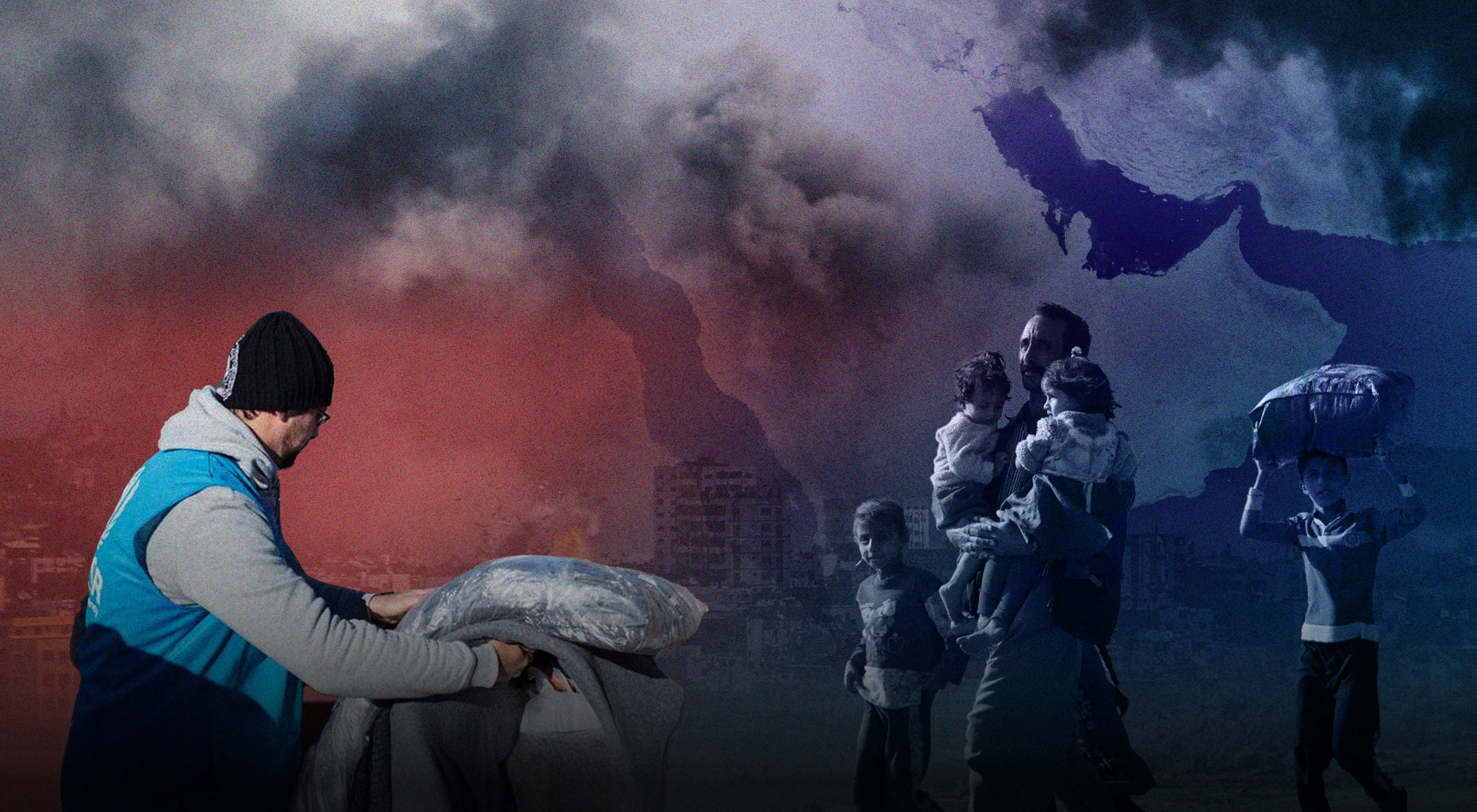Since the financial crisis of 2008, shifting economic balances have led to the transition of power from the Atlantic to the Asia-Pacific region and the evolution of the U.S.-led unipolar and “rule-based liberal global order” toward multipolarity. Since the 2010s, the rise of China and its status as the world’s largest economy in terms of purchasing power parity, Russia’s efforts to re-emerge as a major power, and India’s pivotal role in competition between the U.S. and China have altered both trade balances and routes. Particularly, the Russia-Ukraine War reinstalled a kind of Iron Curtain over the Eurasian continent and the potential risk of spilling the Israel-Gaza conflict into the wider region, affecting the balance in the Red Sea-Aden Gulf-Arabian Gulf triangle, disrupted world maritime trade. As of February 2024, there was a 60% decrease in ship traffic following the routes of the Bab al-Mandeb Strait and the Suez Canal. Due to this critical situation at sea, not only has the travel time of a ship, for instance, from China’s Shanghai Port to the Netherlands’ Rotterdam Port increased by 10-14 days, but also transportation, freight, and insurance prices have risen. This situation further emphasizes the importance of alternative routes and countries located in geographically critical regions.
When we talk about alternative routes, the first thing that comes to mind is China’s “Belt and Road Initiative” (BRI) in 2013. In this transformative project aiming to revive the ancient Silk Road and sea routes, China has invested $1 trillion in 150 countries so far. Asia, Africa, and Latin America have the lion’s share of China’s commodity exports. Most of the Chinese investments focus on the energy, transportation, and telecommunications sectors. However, after the Russia-Ukraine War, alternative or complementary projects to the BRI began to emerge following the closure of the “Northern Corridor,” which was planned to reach Europe via Central Asia and Russia. Even though the Houthi rebels stationed in Yemen grant freedom of passage to Chinese-flagged/owned ships along the Red Sea route, the shift of ship-tanker traffic toward the Asia-Pacific region poses difficulties in finding ships bound for Europe. While container prices are relatively acceptable (ranging from $1,500 to $4,000) compared to the $14,000 level seen during the 2020-21 COVID-19 pandemic, the geopolitical risk perception has reached its highest level for the past 40 years, and it negatively affects market sentiment. In addition to the increase in insurance and credit risk premiums, low stock levels, reasons such as the just-in-time delivery system necessary for logistical efficiency, and short order lead times also cause disruptions in industrial production in Europe; this inevitably reflects on inflation and growth rates. By contrast, there has been a positive divergence in Turkey’s exports in the last five months. Especially countries like Pakistan and Turkey on the BRI’s “Middle Corridor” play a crucial role as a substitute for the “Northern Corridor.”
As an alternative to the East-West route, Russia, Iran, and India proposed the “North-South Corridor” as a path to circumvent Western economic sanctions. The significant decrease in Russia’s trade with the West has elevated Moscow-Tehran economic relations to a higher level. It is a well-known fact that New Delhi has long had intensive economic and military relations with Moscow. Although the Russia-China relationship is referred to as a “no-limits partnership,” it is another fact that China dominates this balance. Likewise, although Turkey-Russia relations gained significant momentum after the Ukraine war, Turkey’s NATO membership and its policy of balancing and hedging between the U.S. and Russia prevent its relations with Moscow from gaining a strategic dimension. In this context, Russia, considering Iran as the sole partner in accessing the southern seas, plans to export its goods to trading partners via the Caspian Sea-Arabian Gulf route using maritime, railway, and highway; however, this corridor has not yet been completed. In addition to this route and as a competitor to China’s BRI, one should also consider the “India-Middle East-Europe Corridor,” agreed upon by the U.S. and India at the last G20 summit in September 2023, which is a central part of the U.S. strategy to contain China. However, this route, which focuses on India, involves intermodal (land-sea) transfers passing through many countries and requires multiple freight transfers several times, making it a costly and risky investment.
Finally, as an alternative, one should mention the “Iraq-Turkey-Europe Development Road” project, which has been frequently referred to in recent months. The “Development Road Project” is a significant initiative aimed at enhancing economic and infrastructural ties between the two countries. It is well known that Ankara has been striving to normalize its relations with neighboring countries since 2021 due to various reasons, such as efforts to modernize its economy, the need to invest in new technologies and educate the young population, and to replace geopolitical gambling with rational policies. In this context, the main purpose of the project is to promote regional development by increasing trade and factor mobility. The project aims to contribute to regional stability by promoting economic development in border areas of Iraq and Turkey, as well as offering cooperation opportunities in various sectors such as energy, trade, tourism, and logistics.
Starting from Iraq’s southern Grand Al Faw Port, which is planned to become the largest port in the Middle East when the first phase is completed in 2025, the corridor is a $17 billion mega-project with a 1200km long land and railway connection that connects the Arabian Gulf to Europe through Turkey, shortening the Red Sea route. Disclosed at an international meeting held in Baghdad last year and attracting interest from China as an investor, the project is of a complementary nature to all these corridors, including the “Middle Corridor.” The “Development Road Project” could be seen as a strategic move for Turkey to diversify its economic partnerships and foster stronger regional ties. However, determined political will and cooperation are needed for the project. The success of the project will depend on how effectively stakeholders can overcome complex issues such as financing, security concerns, political instability, infrastructure deficiencies, and political barriers.
When completed in 2028, if it converges with the “Middle Corridor” through the Caspian Sea to Turkey, it may represent one of the most feasible examples of connecting the Middle East, Central Asia, and Europe on a single route. Facilitating the trade of goods and the movement of people economically, safely, and swiftly will positively impact the long-term development of the region. The most important prerequisite for achieving this is political stability. To bring together the region’s countries around a common goal, generate financing, complete project and engineering work collectively, and provide security guarantees will constitute the second and third steps, respectively. As the saying goes, “where there’s a will, there’s a way.”








